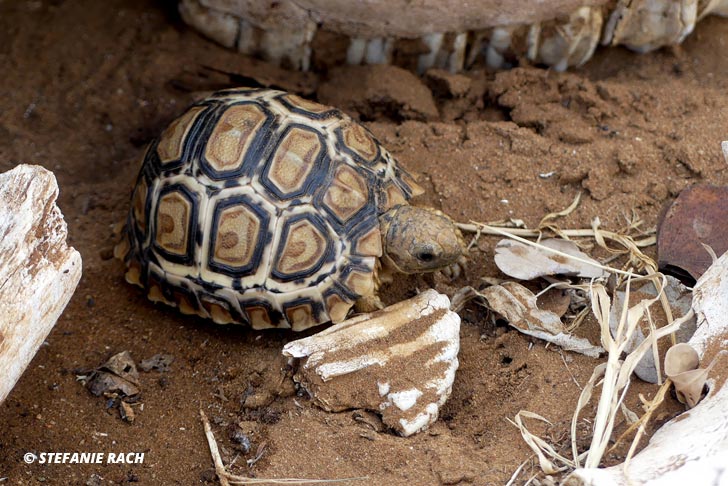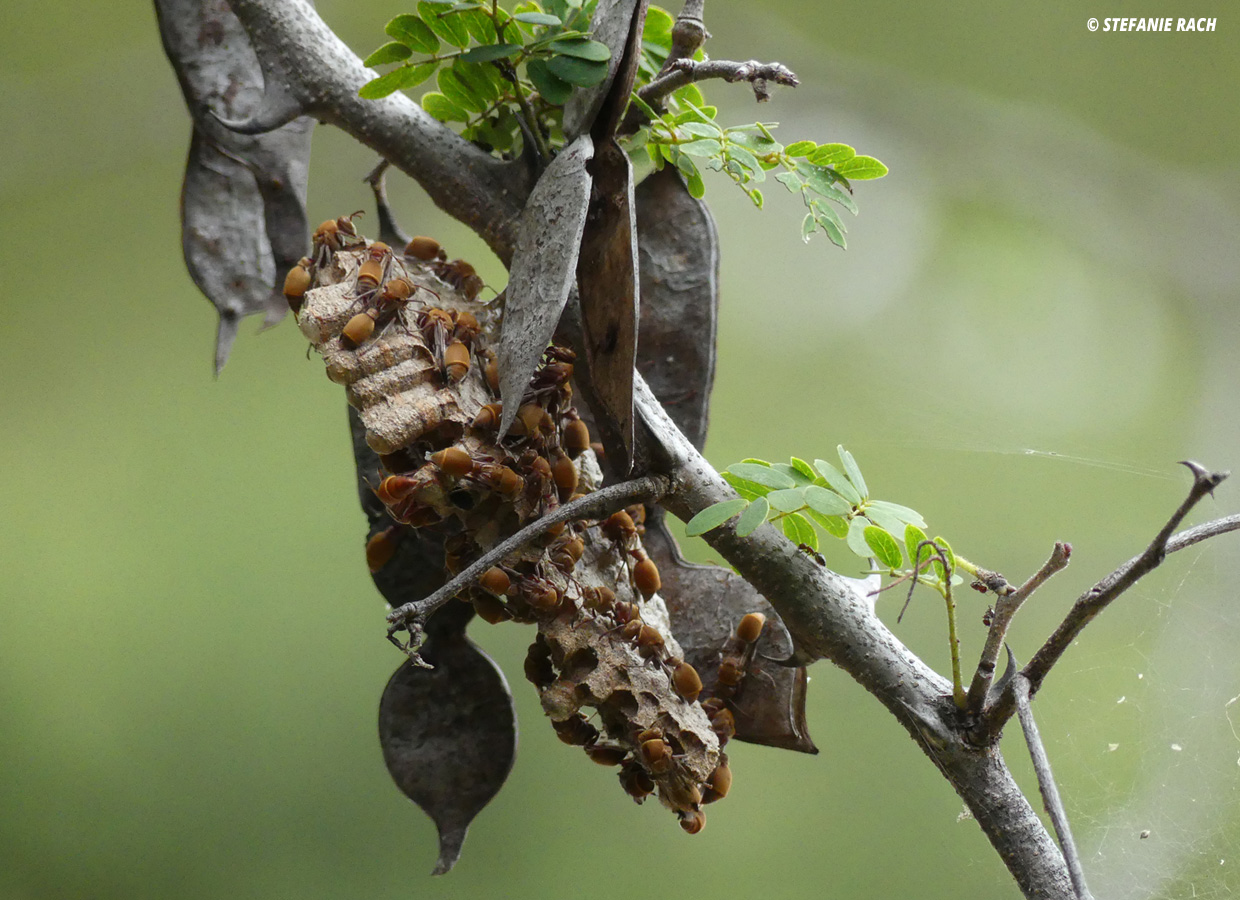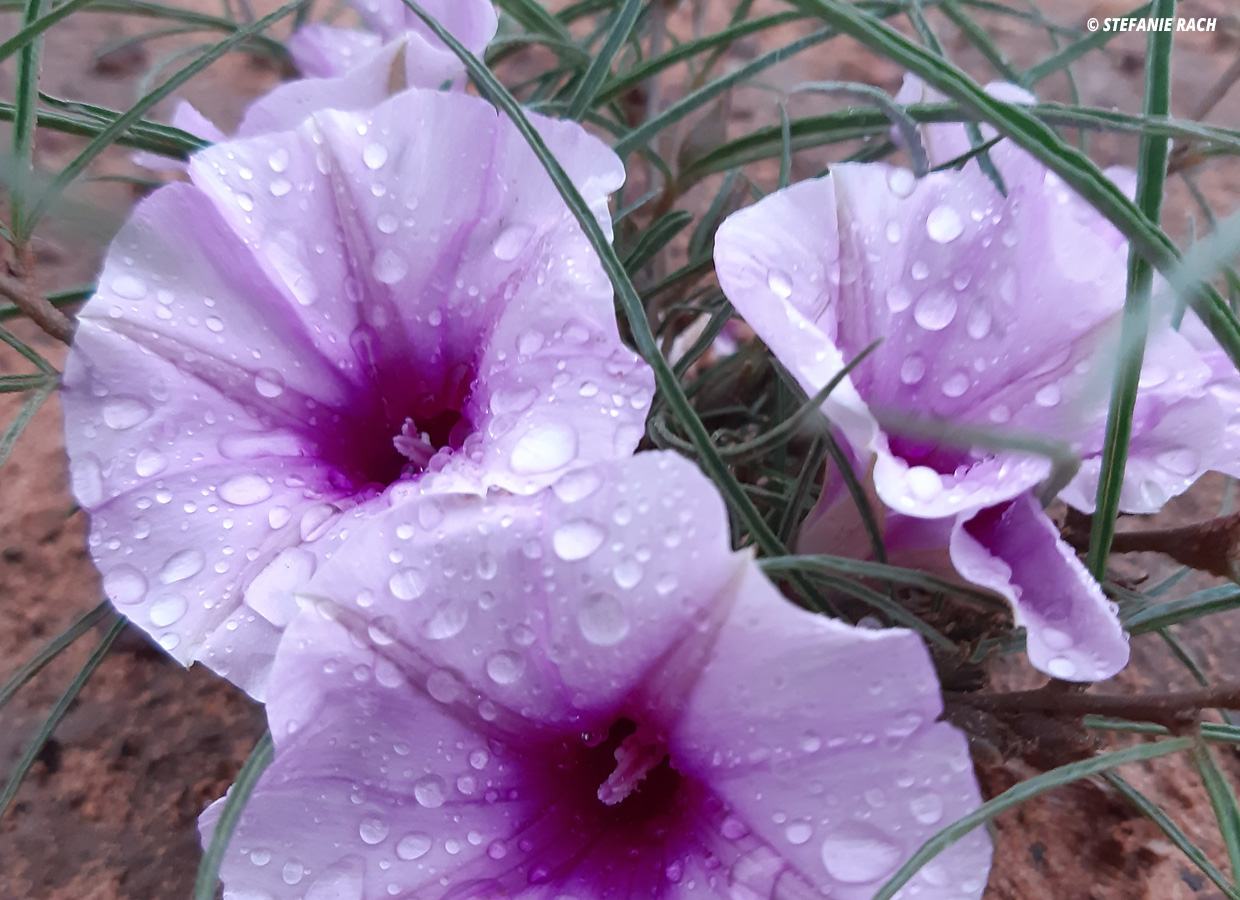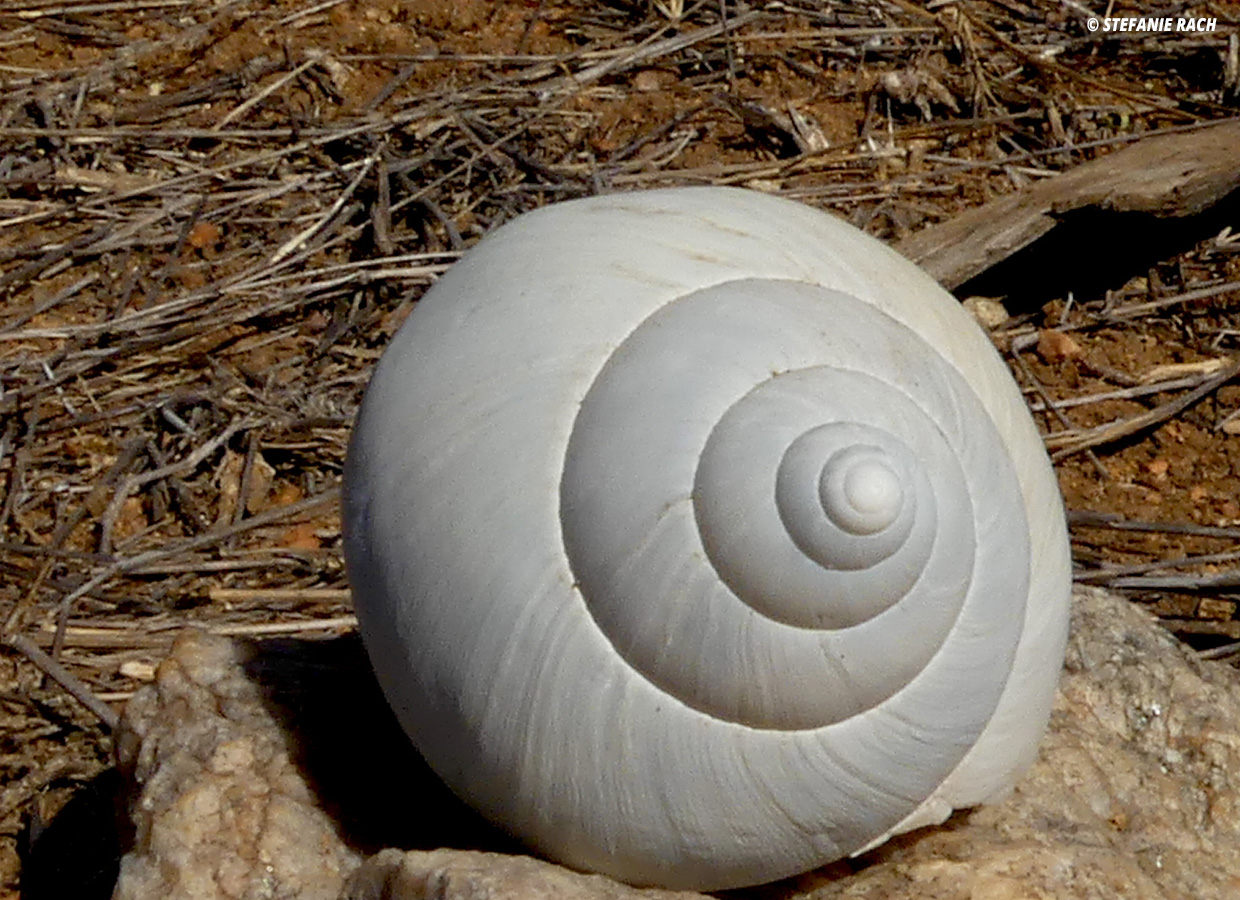On A Bush Walk
There are two options for exploring the wonders of the African bush: If you decide to go on a game drive, you will be taken by your guide in one of the big, mostly open vehicles over the bumpy gravel roads. Or you can venture into the bush on foot to experience the wild life of the savannah at first hand.

By Stefanie Rach
Usually two guides lead the group in front, followed single file by a few guests. It is important to walk in a line close behind each other. For one thing, you look like one big, intimidating creature to the wildlife and not like many little monkey-like troublemakers. Secondly, it reduces the noise considerably if you walk where the person in front of you has already walked, instead of cutting your way through the bushes side by side.

That way you encounter the little wonders of Mother Nature: the shell of a Giant Land Snail, a small Leopard Tortoise resting between stones, or the Paper Wasps building their nest. Only when you get up this close, you suddenly notice the different shades of colour of the grasses, the small wild flowers, or the colourful grasshoppers that jump away as soon as you approach them.
But then I came across the phrase “a cackle of hyenas” in a book. I was taken aback and immediately had to research the matter. And indeed, since hyenas are known for calls that sound like laughter, a group of hyenas is called a cackle. Now the thing about lions also made sense to me: such proud animals form, of course, a pride.

But the most exciting part of a bush walk is when you come across a track. A paw print of a painted wolf, the huge footprint of an elephant, a wavy line in the sand left by snakes. Small hoofprints could be of antelopes or warthogs. A family of mongooses, on the other hand, leaves a flurry of activity from which you can still make out one or two paw marks.
And so you pick up the trail and follow it, looking out for more tracks and other signs. Maybe there is a pile of droppings: in the faeces of predators you can often see hair remains. Zebra droppings, on the other hand, consist of finely chewed grass. If there are small pellets scattered around, they probably come from a giraffe – since they fall from a greater height, they do not form a pile, but roll around.

But you can also discover traces of a completely different kind if you look around carefully and pay attention to every sound: an unpleasant-smelling paste on grass stalks was left by hyenas. They have a gland under their tail whose secretion they use for communication. With just a sniff at the stalk, a hyena knows whether there are other males or females nearby, how old they are and whether they are ready to mate. If you hear a hissing kriss-kriss not far away, be careful. This is the call of the oxpecker, a bird that helps some mammals rid their skin of ticks. Perhaps it sits on the neck of the giraffe whose droppings were discovered before. But maybe it sits on the back of a buffalo or rhinoceros. You should not get too close to these sometimes fearsome animals, but if you crouch behind a bush or use a fallen tree as a barrier to give the animals enough space, you can experience the most incredible encounters.
Every problem has a solution, every solution needs support.
The problems we face are urgent, complicated, and resistant to change. Real solutions demand creativity, hard work, and involvement from people like you.

Stay in the know.
Be ready to act.
To keep up to date with our latest news, events, marches,
campaigns and fundraising activities.
